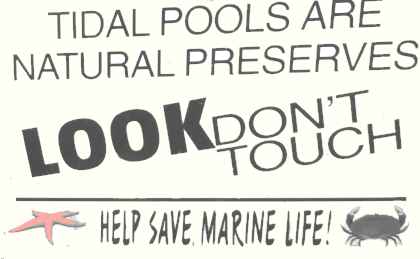common starfish or sea star
The common seastar is the most common and familiar starfish in the north-east Atlantic and Northsea. They can be found in large amounts on mussel beds offshore, where they feed extensively on mussels. But they not only feed onmussels but also on fish eggs, carrion, lobster, worms and other molluscs.

The common starfish.
starfish feeding on mussels
The blue mussel, Mytilus edulis, is the dominant shellfish in the North sea.
The common seastar is specialized in capturing these mussels.
They slowly crawl over mussel bed looking for a good place were they can wrap
its strong arms around the mussel.
The two shells are slowly pulled apart, this can take hours.
Finally, the starfish turns its stomach inside out, and inserts it
through the gap it has created between the shells of the mussel.
The stomach secretes digestive juices which dissolve the soft
mussel body, and the stomach then reabsorbs the digested mussel
as food. So the mussel is eaten alive while still in its shell.
Starfish have been shown to live for several weeks without food.

Echinoderms of the North Sea.
1 Common Starfish or Asterias rubens. (twice)
2 Sand Sea Star or Astropecten irregularis
3 Common Sun Star or Crossaster papposus or Solaster papposus.
4 Common Brittlestar or Ophiothrix fragilis.
5 brittle star or Ophiura albida
6 Amphiura filiformis
7 European Edible Sea Urchin or Echinus esculentus
8 Green Sea Urchin or Echinus miliaris
9 Sea Potato or Echinocardium cordatum
preadators of starfish
Predators of starfishes are the common whelk , large crabs, seagulls and hering gulls.
Cannibalism is also common:
starfish will indeed eat other starfish. Larger ones may prey upon immature or smaller
ones if no other food sources are available.
Mass strandings of starfish
Mass strandings of sea stars are not uncommon. In fact, starfish can be often found on the beach. Very strong winds cause the seabed to be disturbed and the starfish are washed ashore. If there is a combination with higher than usual tides there can be mass strandings of thousands of starfish.
The starfish has many enemies: seagull, Kentish plover, oystercatcher, common shore crab. On this rockpool illustration you can also find: the plumose anemone or frilled anemone and Sea urchins.
regeneration of starfish
Starfish can easely loose an arm. This often happens if they encounter a large crab.
But starfish can regenerate that arm.
The common starfish is even able for autotomy or self amputation that is used when the sea star get stucked between rocks.

Autotomy or self-amputation
Some animals are able to regenerate new body parts.
Lizards and crabs, daddy-long-legs and some spiders
can throw off a limb to escape.from an enemy. Autotomy is also common in animals that live between rocks, like seastars, brittle stars and worms.
It is also used as a form of asexual reproduction, this can be seen in flatworms. Have a look :
seacucumber
brittle star
starfish

Echinodermata, a painting by Theo Carreras , fin du siecle.
1 brittle star
2 echinus escalentus or edibble seaurchin
3 asteria rubens or red or common seastar
4 Neocrinus decorus a sealilie
5 sea cucumber
6 slate pencil urchin, red slate pencil urchin, or red pencil urchin or hererocotus mammilatus, underside

rockpools
As the tide recedes some rockpools are left over.
Rock pools near the low tide mark
don't change a lot. But shallow rock pools that are higher above the low tide mark faces harsh conditions:
The temperature increases or decreases, the salinity (amount of salt in the water) can become higher due to evaporation.
After raining, fresh water drains into the rock pools and a rock pool can become too fresh for marine life.
Oxygen can get depleted due to high temperatures or to little plant live.The wracks grow on the drier high shore, the kelps are restricted to the lower shore

Tide pools are sensitiv for disturbance.
The inhabitants are adapted to live in a rockpool:
seastar
Shore crab
shrimps
Blue mussel, Mytilus edulis
Edible crab, Cancer pagurus
Shore crab, Carcinus maenas
Brown shrimp, Crangon crangon
Common starfish, Asterias rubens
Common brittle star, Ophiothrix fragilis
Sea-mat, Membranipora membranacea
Bladder wrack, Fucus vesiculosus
forkweed
light-bulb tunicate
vase tunicate
Knotted wrack, Ascophyllum nodosum
Goose barnacle
acorn barnacle
common sunstar
beadlet sea anemone
